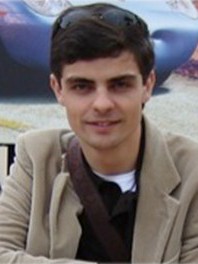abstract
Pharmaceutically active ingredients are among the most persistent wastewater contaminants, resisting to wastewater treatment plants (WWTP) conventional processes, and some of them are proved to pose serious threats to organisms and the environment. In this context, adsorption by activated carbons (AC) is one of the most promising methodologies for the removal of pharmaceuticals from water due to its versatility and high removal efficiency. However, ACs are expensive and therefore not widely applied in WWTP. Primary sludge from paper mills has been previously appointed as a potential inexpensive and renewable source of carbon for AC production by pyrolysis. Computational chemistry may help shed some light into the molecular mechanisms underlying the adsorption of organic pollutants onto ACs. In this context, CarbGen, an online tool for Virtual Porous Carbon (VPC) models creation, was developed and made available for public use. A quantitatively validated model based on both physical and chemical characteristics of an experimentally produced AC is proposed. The produced model is in agreement with obtained experimental data in terms of elemental composition, functional group content and surface area. Grand Canonical Monte Carlo (GCMC) studies were performed on various VPC models with different levels of oxygen content, revealing the importance of electrostatic mechanisms in adsorption, with different degrees depending on the pharmaceutical molecular characteristics. The results further reinforce the importance of functional groups in future VPC models for correct molecular modelling. (C) 2019 Elsevier B.V. All rights reserved.
keywords
PAPER-MILL SLUDGE; ACTIVATED CARBONS; WASTE-WATER; ADSORPTION; ADSORBENTS; EFFLUENT; SURFACE; WOOD; ANTIBIOTICS; PYROLYSIS
subject category
Chemistry; Physics
authors
Pereira, JM; Calisto, V; Santos, SM
our authors
Projects
CICECO - Aveiro Institute of Materials (UID/CTM/50011/2013)
eDYE - Engineering Dyes for Dye-Sensitized Solar Cells (IF/00973/2014)
acknowledgements
This work was funded by FEDER through COMPETE 2020 and by national funds through FCT by the research project PTDC/AAG-TEC/1762/2014. Thanks are also due for the financial support to CICECO-Aveiro Institute of Materials, POCI-01-0145-FEDER-007679 (FCT Ref. UID/CTM/50011/2013) and to CESAM (UID/AMB/50017/2013) financed by FCT/MEC through national funds, and the co-funding by the FEDER, within the PT2020 Partnership Agreement and Compete 2020. Vania Calisto and Sergio Santos also thank FCT for a postdoctoral grant (SFRH/BPD/78645/2011) and support by the FCT Investigator Program (IF/00973/2014), respectively.


